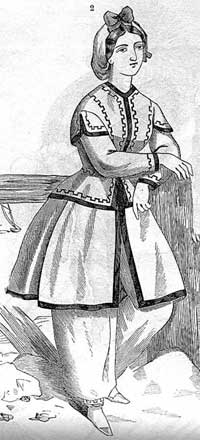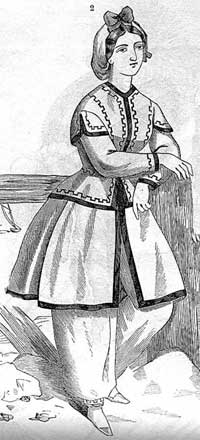 KINGSTON, R.I. –June 1, 2006—Ah, summer. While you pull, tug, and grunt your way into another bathing suit season, you might like to know that Joy Emery, sees a pattern.
KINGSTON, R.I. –June 1, 2006—Ah, summer. While you pull, tug, and grunt your way into another bathing suit season, you might like to know that Joy Emery, sees a pattern.
Swimsuits reflect the style of the time in which they are created, according to Emery who oversees the Commercial Pattern Archive, which is housed in the Special Collections Unit of the URI Library. With nearly 30,000 patterns, fashion periodicals, tailoring journals and other related artifacts dating from the 1860s through the 1980s, it’s the largest such collection in the world.
For example, bathing costumes with ankle-length drawers, pantalets, and full-skirted dresses mirror the fashionable crinolines of the 1860s. The fullness of skirts was swept back to imitate the bustle style in the 1870s. And heavy wool suits, so popular during the 19th Century? They only encouraged itching and bobbing up and down in the water, according to Emery, a professor emerita of theatre and former adjunct professor of textiles, fashion merchandising and design at the University of Rhode Island.
The 1920s ushered in the Flappers and with them a unisex swimsuit, made without a defined waist, but with an emphasis on the hip. By that time knit underwear manufacturers such as Jansen and BVD had begun adding swimwear to their production line.
During the 1970s, bathers often wore more suntan lotion than spandex. “During the 1870s most female bathers resembled Old Mother Hubbard. A century later, they looked like her cupboard…bare,” Emery says with a laugh.
To learn more about the pattern collection go to http://www.uri.edu/library/special_collections/COPA/index.html.

